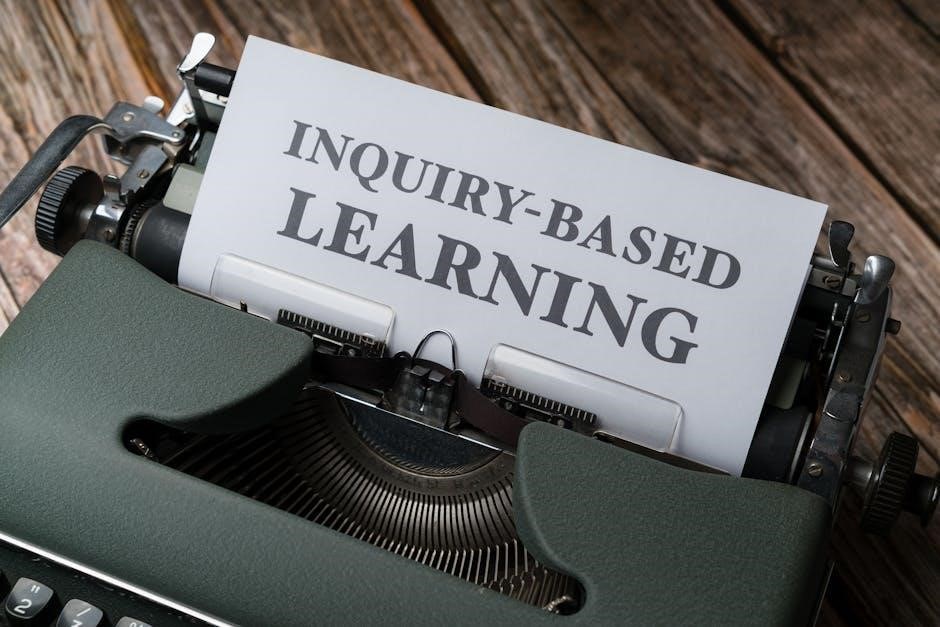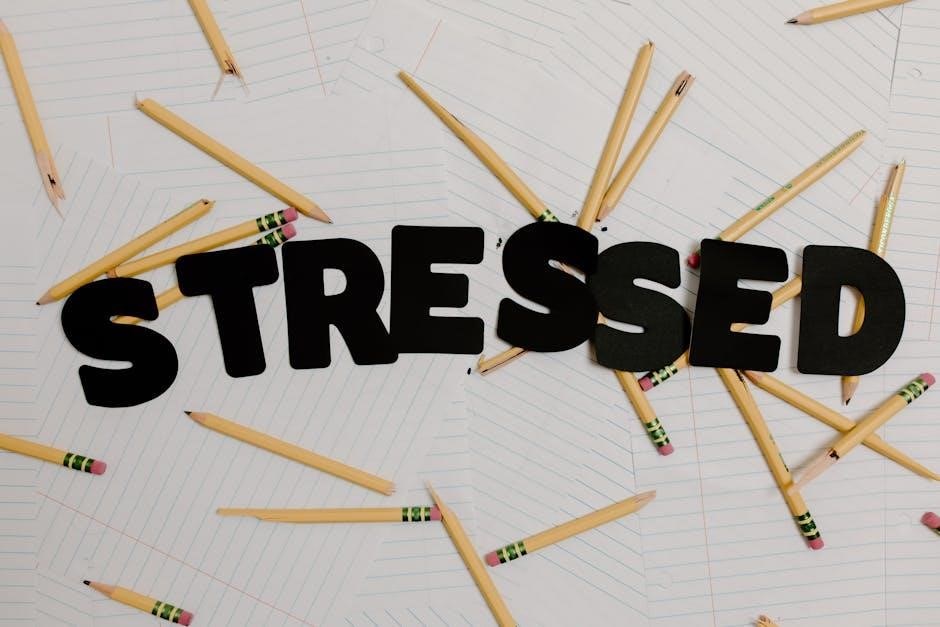Multiplication word problems for Grade 5 involve real-life scenarios, requiring students to apply multiplication skills to solve practical challenges. Worksheets and PDF resources offer engaging practice, helping students master multiplication through interactive and relatable tasks.
Why Multiplication Word Problems Are Important
Multiplication word problems are essential for developing critical thinking and real-world application skills. They help students connect abstract math concepts to practical scenarios, enhancing problem-solving abilities and preparing them for more complex math. Regular practice with word problems builds confidence, fluency, and a strong foundation for future learning.
Benefits of Using Real-Life Scenarios in Learning
Real-life scenarios make learning engaging and practical, helping students see the relevance of math in their daily lives. They encourage problem-solving and critical thinking, making abstract concepts more relatable. By connecting multiplication to real-world situations, students build confidence and develop a deeper understanding of how math applies to everyday challenges. This approach fosters meaningful learning and prepares students for future academic and practical tasks.
Types of Multiplication Word Problems for Grade 5
Multiplication word problems for Grade 5 include multi-step and real-world scenarios, requiring students to apply math skills to practical situations and engage in meaningful problem-solving activities.
Multi-Step Word Problems
Multiplication word problems for Grade 5 often involve multi-step scenarios, requiring students to break down tasks into smaller parts. These problems challenge learners to apply multiple operations and critical thinking. For example, calculating the total cost of items after applying discounts or determining the number of groups that can be formed from a larger set. Multi-step problems prepare students for real-world math by simulating complex, practical situations; They enhance problem-solving skills and encourage logical reasoning. PDF resources provide ample practice opportunities for mastering these challenges.
Real-World Application Problems
Real-world application problems in multiplication for Grade 5 connect math to everyday situations, making learning meaningful. Examples include calculating the total number of legs on octopi in a tank or determining miles run over several weeks. These problems help students see math in action, whether it’s shopping, cooking, or sports. By solving such scenarios, learners improve problem-solving skills and understand how multiplication applies to real life. PDF worksheets offer diverse, practical exercises to enhance this connection and engagement.

Key Skills Developed Through Multiplication Word Problems
Multiplication word problems enhance critical thinking, problem-solving, and logical reasoning. Students learn to interpret key phrases, apply math to real-life scenarios, and strengthen foundational arithmetic skills effectively.
Critical Thinking and Problem-Solving
Multiplication word problems for Grade 5 foster critical thinking by requiring students to analyze situations, identify relevant information, and apply appropriate mathematical operations. These problems often involve multi-step solutions, encouraging students to break down complex scenarios into manageable parts. By engaging with real-life contexts, students develop the ability to make logical connections and solve problems methodically. This skill is essential for tackling more advanced math concepts and applying math to everyday challenges.
Understanding Key Words and Phrases
Recognizing key words and phrases is crucial for solving multiplication word problems. Phrases like “times,” “groups of,” or “each” often indicate a multiplication operation. For example, “12 groups of 8 pencils” signals multiplying 12 by 8. Students learn to identify these cues to determine when to apply multiplication. This skill helps them translate real-world scenarios into mathematical equations, making problem-solving more systematic and accurate. Mastering this approach enhances their ability to tackle complex word problems with confidence.

Common Challenges in Solving Multiplication Word Problems
Students often struggle with multi-step word problems and interpreting multiplication keywords, making it challenging to identify and apply the correct operations effectively.
Troubleshooting Multi-Step Problems
Multi-step word problems often confuse students, as they require breaking down tasks into smaller parts. Identifying given information, unknowns, and operations is crucial. Visual aids like arrays or number lines can simplify complex scenarios, helping students organize their thoughts and reduce errors. Encouraging step-by-step problem-solving fosters logical thinking and improves accuracy in tackling multiplication word problems effectively.
Interpreting Word Problem Language
Understanding the language in word problems is vital for accurate solutions. Key words like “times,” “groups,” or “each” often indicate multiplication. Students should identify these cues to determine the operation needed. Highlighting or underlining important terms can help focus on the problem’s requirements. Visual aids like diagrams or number lines can also clarify complex scenarios, making it easier to translate words into mathematical expressions and solve problems effectively.
Effective Strategies for Teaching Multiplication Word Problems
Using visual aids like arrays and number lines helps students visualize multiplication. Incorporating real-world contexts makes problems relatable, fostering critical thinking and practical application skills, enhancing learning outcomes effectively.
Using Visual Aids Like Arrays and Number Lines
Visual aids such as arrays and number lines are effective tools for teaching multiplication word problems. Arrays help students visualize multiplication as repeated addition, while number lines demonstrate skip counting. These methods make abstract concepts concrete, improving understanding and engagement; By breaking down problems into manageable steps, visual aids reduce confusion and build confidence in solving real-world multiplication challenges.
Encouraging the Use of Real-World Contexts
Using real-world contexts in multiplication word problems helps students connect abstract math to everyday situations. Scenarios like calculating the total number of apples in baskets or determining the cost of toys in bulk make learning relevant and engaging. These contexts enhance problem-solving skills by showing how multiplication applies to real life, such as shopping or planning events. By relating math to familiar experiences, students develop a deeper understanding and confidence in solving practical challenges.

Interactive Resources for Practicing Multiplication Word Problems
Interactive resources include free printable PDFs, online games, and engaging tools that make learning multiplication fun. These resources provide real-life examples and challenges to enhance problem-solving skills.
Free Printable Worksheets and PDFs
Free printable worksheets and PDFs offer engaging multiplication word problems for Grade 5 students. These resources are easy to download and provide a variety of real-life scenarios, making learning interactive and fun. They cover topics like fractions, decimals, and multi-step problems, helping students apply their skills in practical ways. Many worksheets include answers, allowing for self-checking and independent practice. Teachers and parents can access these tools without needing to log in, making them a convenient option for homeschooling or classroom use. They are reusable and ideal for consistent practice, ensuring mastery of multiplication concepts.
Online Games and Interactive Tools
Online games and interactive tools make learning multiplication word problems fun and engaging for Grade 5 students. These resources offer quizzes, puzzles, and real-world scenarios that challenge students to apply their skills. Many tools provide immediate feedback, allowing students to track their progress and identify areas for improvement. Interactive platforms cater to different learning styles, making multiplication practice enjoyable and effective. They are accessible anytime, anywhere, offering a flexible way to reinforce classroom lessons and build confidence in solving word problems.

Assessment and Feedback in Learning Multiplication Word Problems
Regular quizzes and progress tracking help assess understanding of multiplication word problems. Providing constructive feedback ensures students improve their problem-solving skills and build confidence in math.
Regular Quizzes and Progress Tracking
Regular quizzes are essential for monitoring students’ grasp of multiplication word problems. Teachers can use free PDF worksheets to create short, focused assessments. Tracking progress over time helps identify areas where students need extra support. By reviewing quiz results, educators can adjust lesson plans to address common challenges. This consistent evaluation ensures students stay on track and build confidence in solving multiplication problems. Regular feedback also highlights improvements, motivating learners to excel.
Providing Constructive Feedback
Constructive feedback is crucial for helping students improve their multiplication problem-solving skills. Teachers can use free PDF worksheets with answer keys to review work and highlight areas for growth. Providing specific comments on strengths and weaknesses guides students in understanding their mistakes. Regular, positive feedback boosts confidence and encourages learners to approach challenges with enthusiasm. Celebrating progress, no matter how small, motivates students to continue practicing and mastering multiplication word problems.
Consistent practice and celebrating progress are key to mastering multiplication word problems. Utilize PDF worksheets and interactive tools for engaging and effective learning experiences.
Encouraging Consistent Practice
Consistent practice is essential for mastering multiplication word problems. Use free PDF worksheets and online games to create engaging routines. Set daily goals and reward progress. Incorporate real-world examples to make learning relatable and fun. Encourage students to reflect on their mistakes and understand the reasoning behind each solution. Regular practice builds confidence and improves problem-solving skills over time. Make math enjoyable by integrating interactive tools and celebrating small achievements.
Celebrating Progress and Building Confidence
Celebrate students’ progress, no matter how small, to build confidence in solving multiplication word problems. Acknowledge their achievements with positive reinforcement, such as stickers or verbal praise. Encourage students to track their growth by reviewing past worksheets or digital logs. Highlight their ability to tackle increasingly complex problems, showing how far they’ve come. Confidence grows when students feel valued for their effort and persistence, fostering a love for learning and problem-solving.



